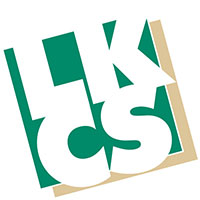By now, all business realize the importance of a great web site and the need to continuously maintain that web site with the latest information about their products and services.
The end result is that more and more web sites are being built with Content Management Systems (CMS) that enable end-users to modify their web site content without technical web programming expertise.
There are two primary groups of CMS platforms: open source (WordPress, Drupal, Joomla, etc.) and commercial (Sitefinity, Sitecore, DNN, Kentico, etc.).
Advantages of Open Source CMS Platforms
- No cost to use the software. There’s no startup cost, and no monthly fees for the licensing of the software.
- Thousands of plugins available to enhance your site’s functionality. Most open source CMS will have a large database of plugins and extensions provided by a public community of developers. Anyone can download and use these plugins for their own website.
- Wisdom of the community. The developer community of a particular open source CMS will often have its own forum where individuals can bounce ideas, ask questions, and share tips with one another.
Advantages of Commercial CMS Platforms
- Professional support and software updates come included. While user forums are available, direct support is available from the company that wrote the software. Software updates are released regularly that continue to improve functionality while fixing any minor bugs.
- Web site functionalities come standard. Commercial CMS don’t use third-party plugins. Instead, functionalities come built in to the core of the software. There are no compatibility issues with upgrades and patches.
- Consistent, integrated user interface. Due to the fact that the commercial CMS software is designed by a unified team of developers, there is a high level of consistency in the user interface from one module to another. And because everything is developed under one roof, these functionalities are designed to integrate with one another without issue.
- Security. The company developing the CMS software has greater control over the security of your website’s coding, allowing them to ensure that there are no vulnerabilities unintentionally embedded into your site.
Open source CMS systems come with hidden costs and hassles due to frequent updates and patches that are often incompatible with third party plug-ins. And security is a huge concern with open source platforms.
While the core open source CMS can be routinely patched and updated to plug security holes, hackers often infiltrate web sites built with open source CMS platforms by attacking the plug-ins required to make the CMS do what you need. The vast majority of companies do not have the time or resources needed to thoroughly review these plug-ins, or write their own.
Is your current web site built with an open source CMS? Do you know what plug-ins are used on your site? (By the way, you may not think there are any, but chances are your site was built with at least a few of these plug-ins.) Do you know who wrote them? Have you tested the code in these plug-ins? Have you ever updated them since they were installed?
That’s the difference when using a commercial product. There aren’t any third-party plug-ins needed to extend the functionality of the CMS as it’s all included with your software license. The company that sells the software, wrote and tested the software. Updates to the software update everything – you don’t have to worry about some pieces of software being written with older, vulnerable code.
Did you like this blog post?
Get more posts just like this delivered twice a month to your inbox!



